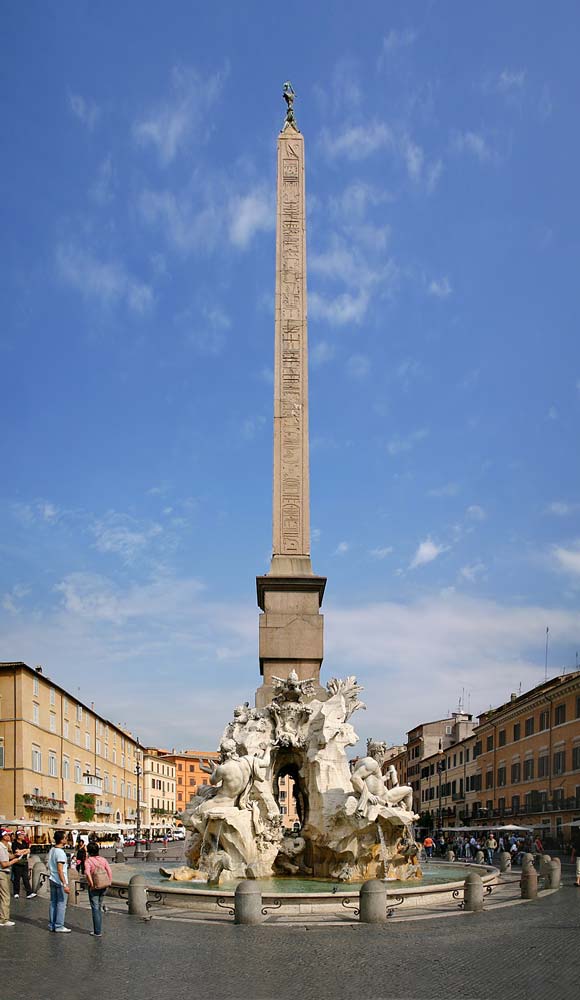| Fontana dei Quattro Fiumi | |
|---|---|
 |
|
| Artist | Gian Lorenzo Bernini |
| Year | 1651 |
| Location | Rome, Italy |
| Dimension | H: 40 ft (12.19 m) |
| Gian Lorenzo Bernini Artworks | |
| Apollo and Daphne | |
| David | |
| Ecstasy of Saint Teresa | |
| Bust of Louis XIV | |
| Fontana dei Quattro Fiumi | |
| Medusa | |
| Complete Works |
The Fontana dei Quattro Fiumi is an architectural monument located in Rome in the Piazza Navona. The name translates into English as the “Fountain of Four Rivers.”
Structure
The fountain consists of a water basin in which rocks are supporting the sculpted figures of four ancient river gods. Rising from the center of the basin is a tall Egyptian style obelisk. Mounted on top of the obelisk is a sculpted representation of the family crest of the Pamphilis, namely a dove holding a twig from an olive tree.
The Four Rivers
The four rivers referred to in the name are the Nile, the Ganges, the Danube and the Plate. The latter is the river that forms part of the border between Argentina and Uruguay. The sculptures of the gods include features and emblems that are representative of the four rivers and their locations.
The fountain was designed and completed in 1651 by one of the leading sculptors of the time, Gian Lorenzo Bernini.
How Bernini was Selected
The fountain was commissioned by the then Pope, Innocent X, who was a member of the Pamphili family. Piazza Navona was selected as the location for the fountain because Innocent’s family home overlooked the square. When the project was launched, the Pope initiated a competition, inviting interested artists to submit models of their ideas. Many of the Pope’s advisors were hostile to Bernini, as a result of which Bernini was initially excluded from the competition.
However, Bernini was persuaded by Prince Niccolo Ludovisi, who was married to the Pope’s niece to design a fountain and build a model. The model was placed in a room where the Pope was certain to see it, and when he did so, he immediately selected it.
The architectural style of the fountain was a complete departure from the other fountains in the city at the time, and the fountain received great praise from many sources.